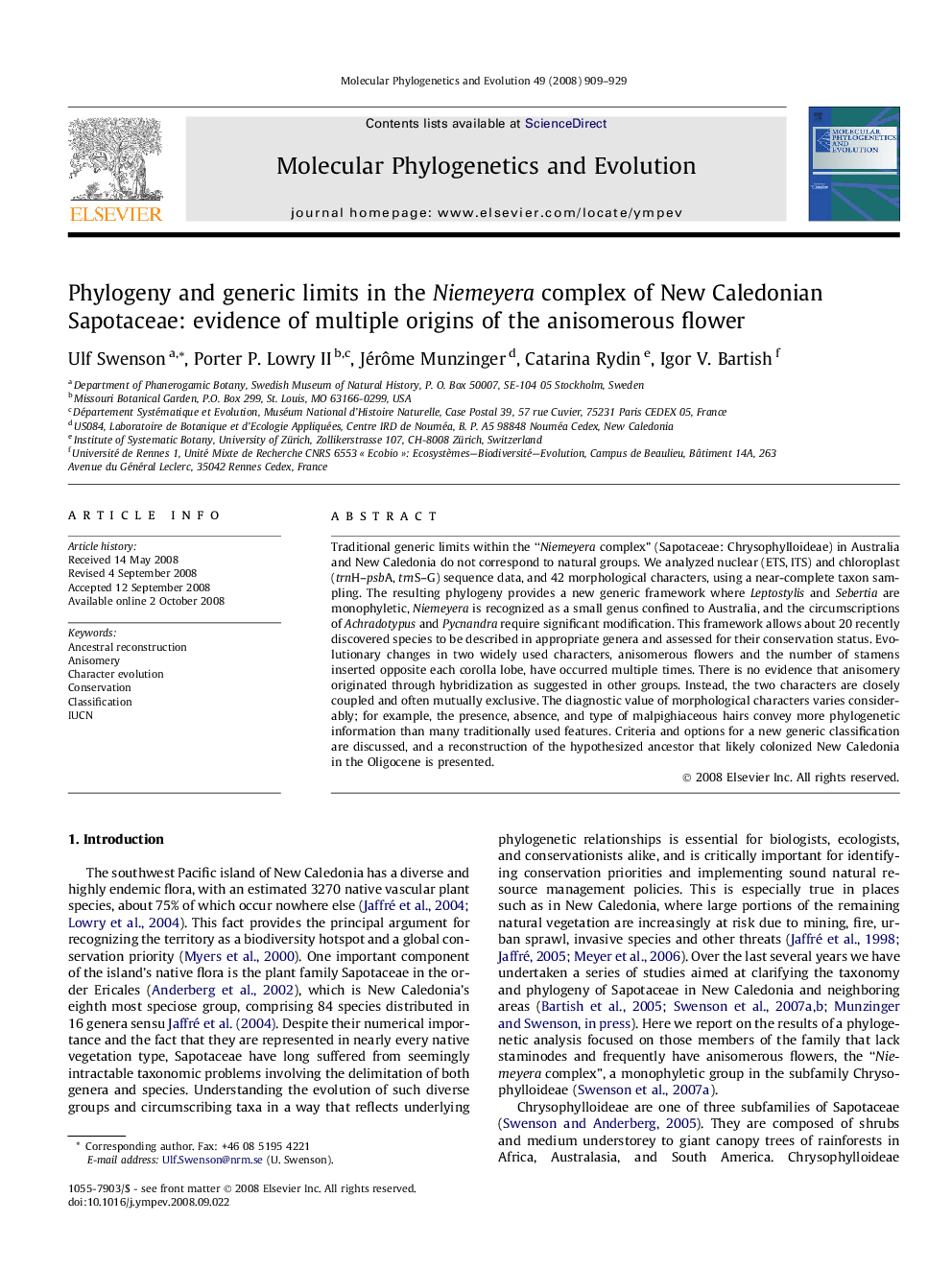| Article ID | Journal | Published Year | Pages | File Type |
|---|---|---|---|---|
| 2835005 | Molecular Phylogenetics and Evolution | 2008 | 21 Pages |
Traditional generic limits within the “Niemeyera complex” (Sapotaceae: Chrysophylloideae) in Australia and New Caledonia do not correspond to natural groups. We analyzed nuclear (ETS, ITS) and chloroplast (trnH–psbA, trnS–G) sequence data, and 42 morphological characters, using a near-complete taxon sampling. The resulting phylogeny provides a new generic framework where Leptostylis and Sebertia are monophyletic, Niemeyera is recognized as a small genus confined to Australia, and the circumscriptions of Achradotypus and Pycnandra require significant modification. This framework allows about 20 recently discovered species to be described in appropriate genera and assessed for their conservation status. Evolutionary changes in two widely used characters, anisomerous flowers and the number of stamens inserted opposite each corolla lobe, have occurred multiple times. There is no evidence that anisomery originated through hybridization as suggested in other groups. Instead, the two characters are closely coupled and often mutually exclusive. The diagnostic value of morphological characters varies considerably; for example, the presence, absence, and type of malpighiaceous hairs convey more phylogenetic information than many traditionally used features. Criteria and options for a new generic classification are discussed, and a reconstruction of the hypothesized ancestor that likely colonized New Caledonia in the Oligocene is presented.
